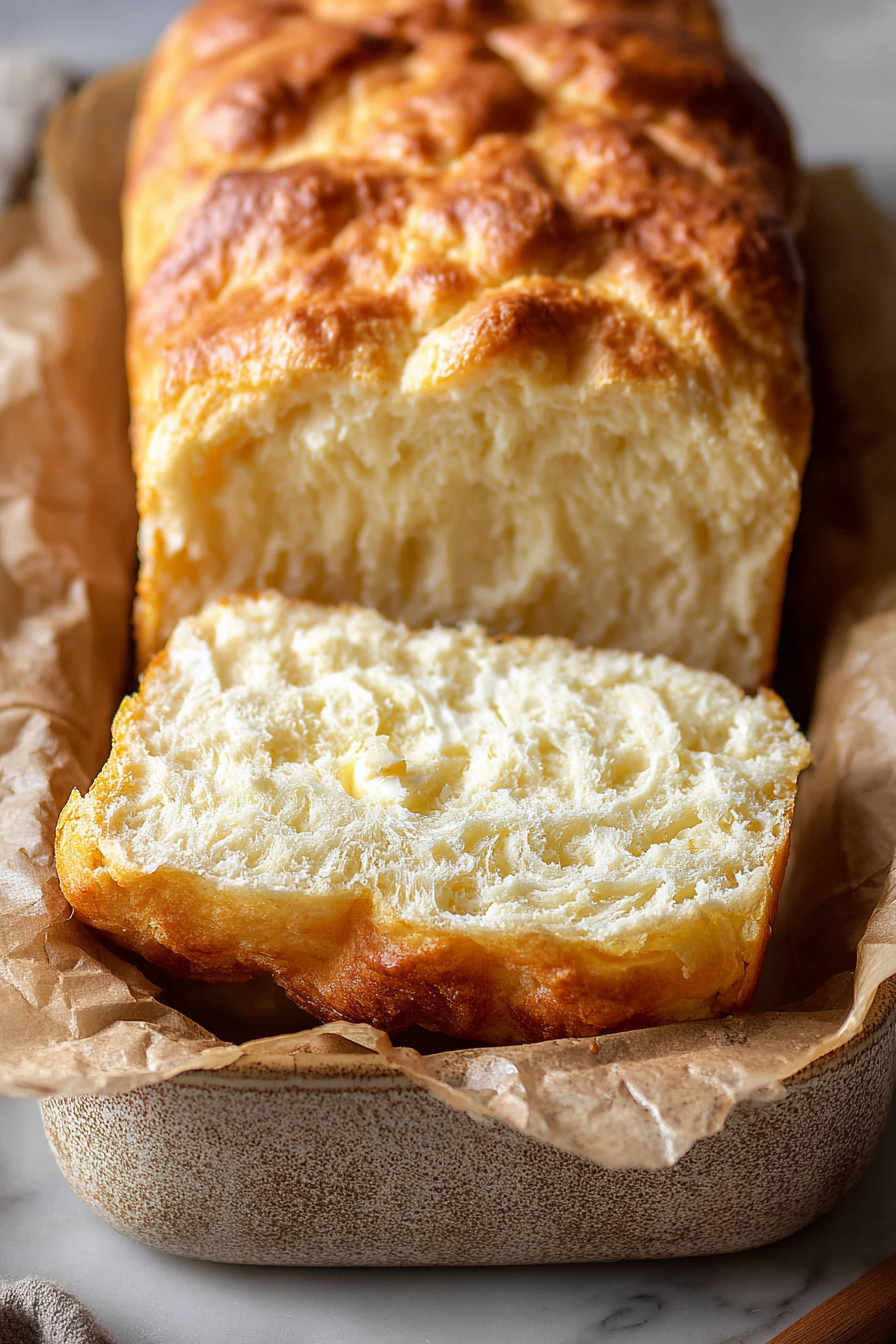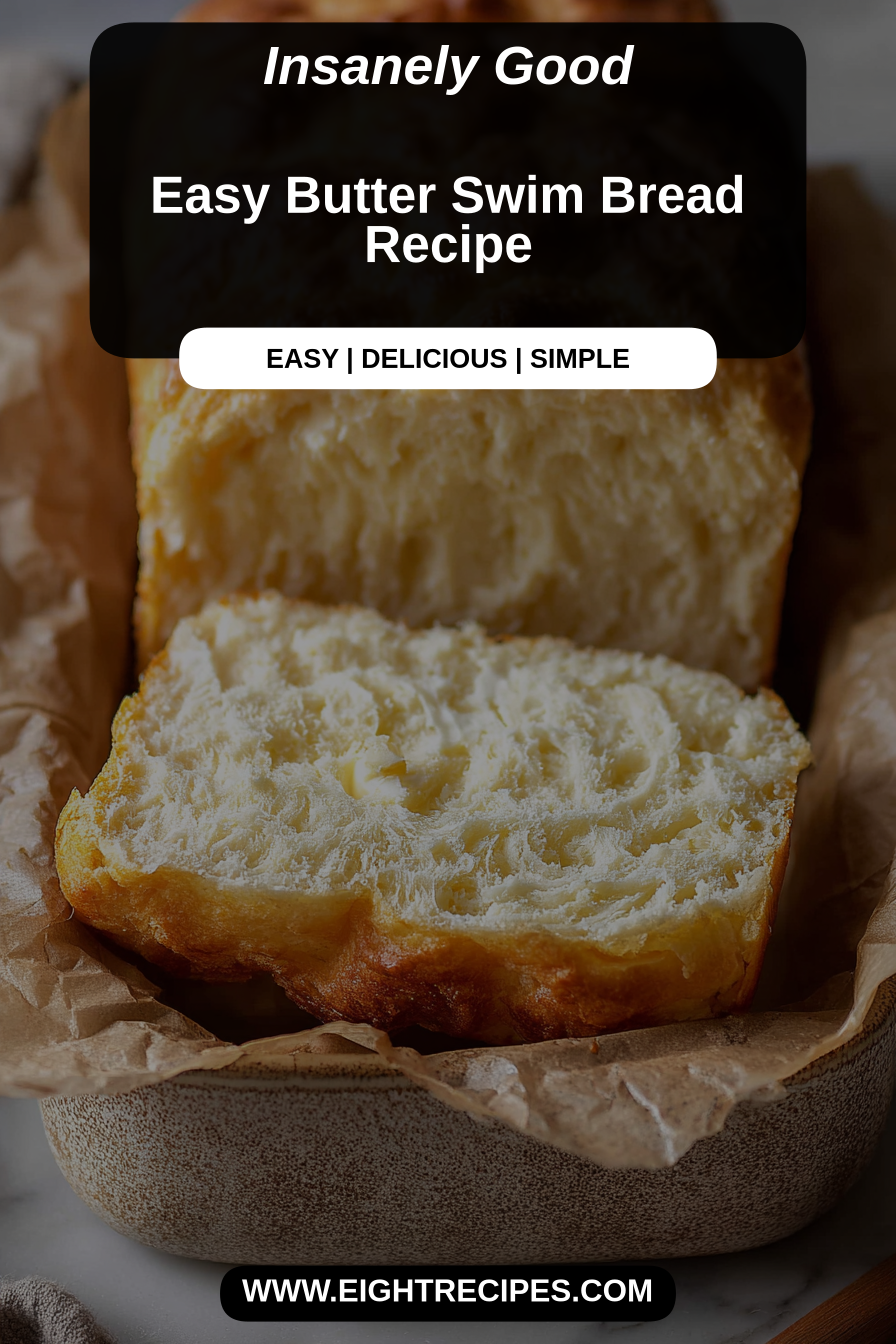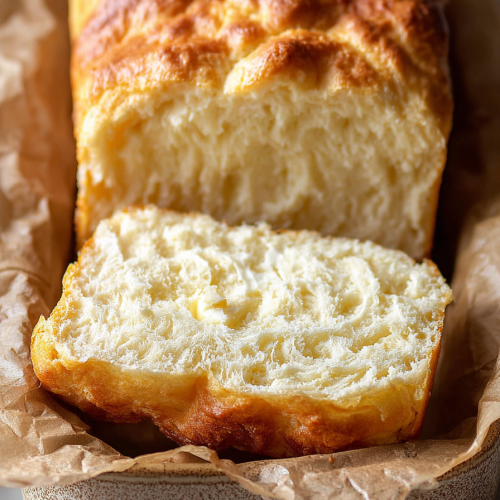Easy Butter Swim Bread Recipe

This loaf is the little, glorious thing that shows up at our table when comfort calls: a soft, buttery pull-apart bread with a golden, glossy top that practically begs for an extra swipe of butter. It’s quietly special because the dough is tender and enriched, and the “butter swim” finish — melted butter pooled and brushed over the top as it bakes — gives each slice a flaky, slightly caramelized edge that my family fights over.
My husband is the resident bread critic in our house, and for whatever reason this one makes him smile the way Sunday morning pancakes do. We started making it on chilly evenings when we wanted something warm to accompany stew, and it quickly graduated to weeknight hero. One night I forgot to set the timer and came back to a loaf with a deeper, nutty crust; he declared it the best mistake I’d ever made. Now it’s the bread I bring to potlucks because it travels well and feels like a small act of kindness.
Why You’ll Love This Easy Butter Swim Bread Recipe
– Rich, tender crumb thanks to an enriched dough that stays soft for days.
– The “butter swim” finish creates crisp, caramelized edges and a glossy, pull-apart top—great for tearing and sharing.
– Simple pantry-friendly ingredients; no intimidating techniques, just gentle folds and proofing.
– Versatile: serve it with savory stews, honey butter, or jam, and it always feels a little celebratory.
Behind the Recipe
This loaf is forgiving in a way that pleasantly surprised me. The dough benefits from some patience with proofing more than from complicated handling—give it time, and it rewards you with a soft interior. A couple of things I learned the hard way: don’t add too much flour when shaping (the butter swim helps keep things rich, so the dough should remain slightly tacky), and brush that melted butter while the loaf is still hot to get the best glossy finish. If your kitchen is cold, give the dough a warmer spot to rise (I use the oven with the light on). Finally, warm—never hot—butter is key when you want that silky glaze; if it’s scalding you’ll deflate the loaf when you brush it.
Shopping Tips
– Baking Basics: Choose a strong all-purpose or bread flour for structure; if you want a softer crumb, a blend with some pastry flour works nicely.
– Fats & Oils: Real unsalted butter gives the best flavor and browning for the swim; if using salted butter, reduce added salt elsewhere.
– Eggs: Use room-temperature eggs so they mix evenly into the dough and help with a tender crumb.
– Dairy: Whole milk or a mix of milk and cream keeps the dough enriched and soft—nonfat milk will make a firmer loaf.
– Sweeteners: A little granulated sugar or honey feeds the yeast and promotes a lovely brown crust; don’t skip it entirely.
Prep Ahead Ideas
– Mix the dough the night before and let it do a slow, cold rise in the fridge; shape and proof the next morning for fresh-baked bread with minimal morning work.
– Melt and measure the butter ahead, then keep it warm in a small jar set in hot water just before brushing.
– Store pre-measured dry ingredients together in a container for a faster mise en place—especially helpful if you’re making multiple loaves.
Time-Saving Tricks
– Use a stand mixer with a dough hook for quick, consistent kneading; it frees your hands and shortens the process without sacrificing texture.
– Trade a long warm rise for a slow overnight rise in the fridge if you need to split work across days.
– Preheat your baking sheet or Dutch oven so the loaf gets an immediate lift when it hits the oven; this improves oven spring and shortens bake time slightly.
– While some resting is important, don’t overproof—if you see large, loose bubbles, gently reshape and give a short second proof to regain structure.
Common Mistakes
– Overworking the dough: I once kneaded until it was stiff and dry; the loaf was dense. Pull back when the dough is smooth and slightly tacky.
– Using butter that’s too hot for the butter swim: it melted the top right off the loaf. Let melted butter cool a touch until warm, not piping.
– Underproofing: results in tight, heavy crumb. If the loaf hasn’t noticeably puffed, give it more time.
– Over-salting: salt enhances flavor but too much masks the butter; taste any compound butter or spreads before adding extra salt to the dough.
What to Serve It With
– A thick vegetable stew or chili—this bread is perfect for sopping up savory, saucy bowls.
– Compound butter (herb or honey cinnamon) for breakfast or brunch.
– A cheese board with soft cheeses like brie or camembert, where the tender crumb pairs beautifully with runny cheese.
Tips & Mistakes
– If your loaf feels too greasy after the butter swim, a quick minute under the broiler (watch closely) will crisp and set the top without losing moisture.
– For an even bake, rotate the loaf halfway through baking and avoid opening the oven too often during the final rise in the oven.
Storage Tips
Store in airtight containers in the fridge. It reheats beautifully, but if you sneak a bite cold straight from the container, it still works.
– To refresh: warm slices briefly in a toaster oven or a hot skillet with a pat of butter for a minute or two to restore that just-baked character.
– Freeze leftover loaf slices wrapped tightly in plastic and placed in a freezer bag; toast straight from frozen for breakfast.
Variations and Substitutions
– Swap half the flour for whole wheat pastry flour for a nuttier flavor; any more and you’ll need extra hydration.
– Replace a portion of butter with browned butter for deeper, toasty notes—keep the same weight of fat.
– For a slightly sweet version, fold in a spoonful of sugar or drizzle honey over the top right after baking.
– If dairy-free, use a plant-based butter with a high fat content (stick-style spreads work best) and a non-dairy milk substitute; texture will be close but not identical.

Frequently Asked Questions

Easy Butter Swim Bread Recipe
Ingredients
Main Ingredients
- 0.25 cup granulated sugar This adds a slight sweetness to the bread.
- 1 cup milk Make sure it's warm but not boiling for best results.
- 0.25 cup butter Melted for the batter and for pouring over top.
- 2.25 tsp active dry yeast Make sure it's fresh for rising.
- 3 cups all-purpose flour Sifted for easier mixing.
- 1 tsp salt Balances out the sweetness.
Instructions
Preparation Steps
- Start by warming your milk until it’s just warm to the touch. In a large mixing bowl, combine the warm milk, sugar, and yeast. Let it sit for about 5 minutes until it becomes frothy. This means your yeast is active!
- Add in the melted butter and salt. Gradually mix in the flour until a soft dough forms. You might not need every bit of flour, so keep an eye on the texture!
- Knead the dough lightly for a few minutes and then shape it into a ball. Place it back in the bowl, cover it with a towel, and let it rise in a warm spot for about 30 minutes, or until it doubles in size.
- Once risen, preheat your oven to 350°F (175°C). Punch the dough down and transfer it to a greased baking dish. Pour any remaining melted butter over the top for that rich buttery flavor.
- Bake for about 30 minutes, or until the top is golden brown. Let it cool slightly before serving, and enjoy the amazing aroma and flavor!
